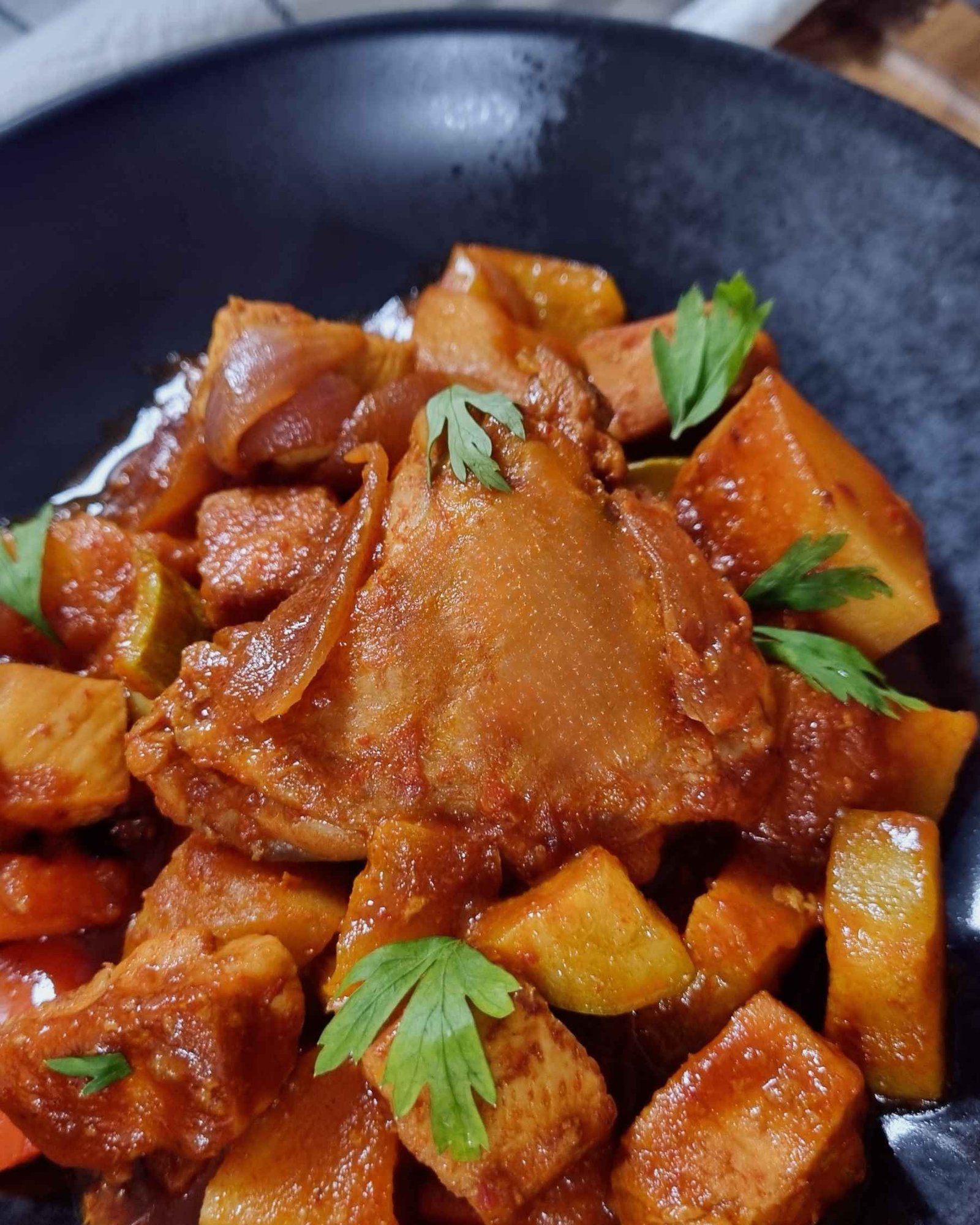
Newsletter Subscribe
Enter your email address below and subscribe to our newsletter

Enter your email address below and subscribe to our newsletter
Let me put it simply: Dakbokkeumtang is one of my all-time favourite recipes in the world! There is no competition when it comes to the subtle spicy flavours that showcase soft, tender potatoes, sweet carrots, and caramelized soft onions, with flavours that are bold and savoury. It’s pretty addictive.
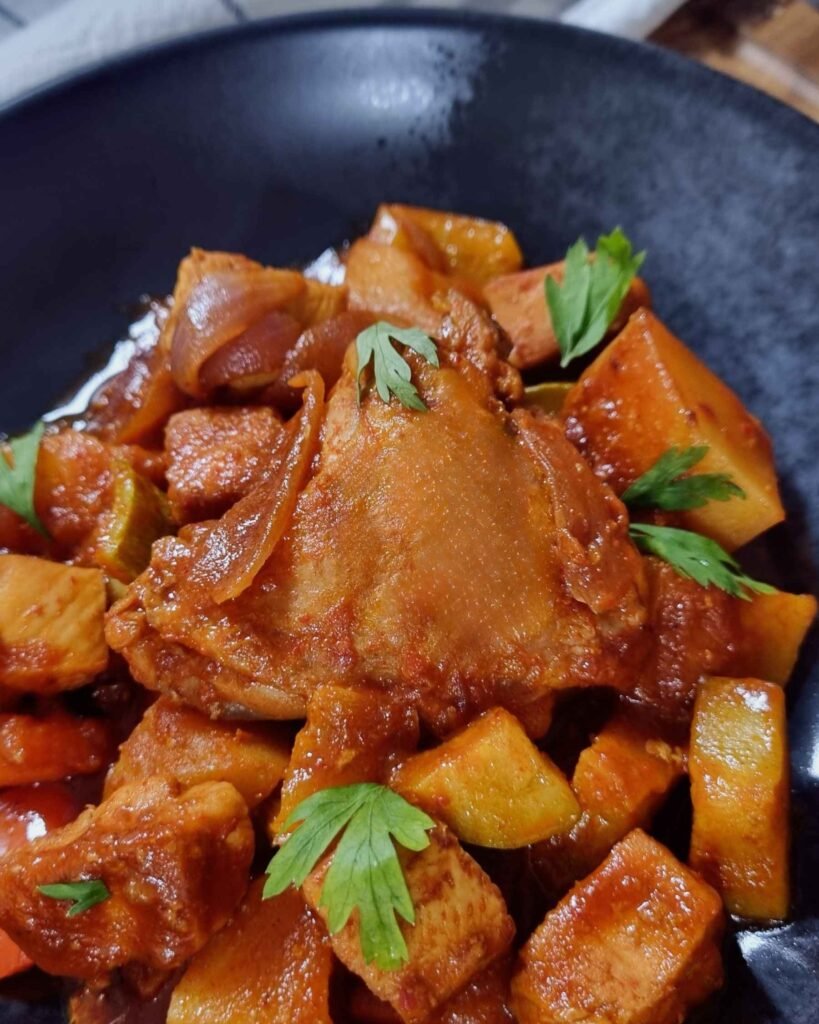
So what is Dakbokkeumtang? It is a chicken braised in gochuchang-based sauce. Gochuchang is a fermented red pepper paste and the best part about it is that it is not overly spicy, so it won’t blow your socks off. There is also the addition of Gochugaru which is a red chili flake, with a mild spicy fruity flavour, it enhances the Dakbokkeumtang immensely.
Braising meat is a classic part of Korean home-cooked food, it is absolutely satisfying to indulge in and an important staple in Korean cuisines. The best part about Dakbokkeumtang is that it is a fall-apart type of chicken. The addition of vegetables adds to the delightful taste of the meal. The chicken broth reduces down into an incredible medley of charming flavours. I swear, every bite feels like something extraordinary!
Did you know Koreans used to call this dish Dakdoritang, which suggests a Japanese influence since the word ‘dori means bird’ in Japanese! However, they’ve changed it to Dakbokkeumtang as this meal is traditionally Korean dish.
Dakbokkeumtang is a perfect balance of spicy, sweet and savoury flavours. This dish is the ultimate definition of comfort food, with tender chicken, soft potatoes and carrots, it creates a totally satisfying dish that is delicious on a chilly day. The spice level is completely customizable, if you prefer a super spicy dish, add more gochuchang, if you would like a milder version, reduce the amount of the red pepper paste.
This dish is perfect next to a bowl of hot steamed rice, it is also perfect for family gatherings, lunch and dinner meals where the emphasis on quality time with ones loved ones. Its actually quite fancy to say, ‘Oh, I’ve prepared an authentic Korean dish‘. Did you know that chicken was not commonly available in Korea and did not feature heavily in Korean cuisine until the 20th century. Nowadays, South Koreans eat over one billion chickens on an annual basis.
Chicken breast, Chicken thighs, Onions, Potatoes, Carrots, Bell Peppers, Tomato Paste, Ginger and Garlic paste, Oyster sauce, Rice vinegar, Gochuchang, Salt, Soy Sauce.
The Bell Pepper adds a fresh taste, whilst the Onions, Ginger and Garlic adds a sweet and pungent taste. The carrots creates a subtle sweetness. The soy sauce adds an umami taste. The Gochuchang is the main star of the show. Did you know that the earliest mention of Gochuchang dates back to 1433 in a book called the Collected Prescriptions of Native Korean Medicines.
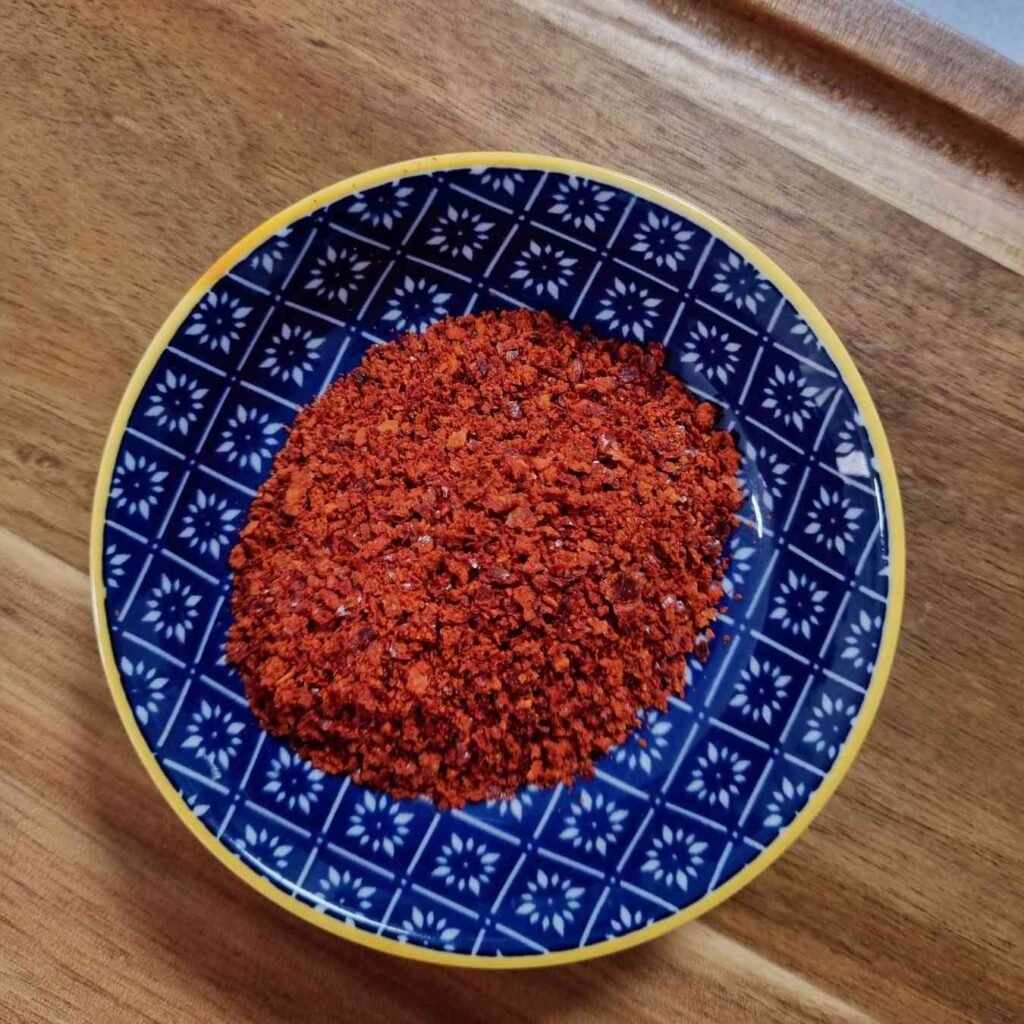
Gochuchang is unique to South Korea, this Red pepper paste is made from slightly spicy red peppers. It is fermented in large clay pots that creates a mature and delicious spicy taste. Tomato paste adds depth to the other flavours and the starchy potato when cut into cubes thicken up the stew.
The Gochuchang paste is a Korean red pepper paste that is not as spicy as you would imagine, it is loaded with flavour and since it is fermented, it will be pleasantly spicy in a mild way.
We’ve used ginger/garlic paste in this recipe. If you don’t have it, you can make it at home. Simply, grate a small piece of ginger and set aside. Roughly chop a few garlic cloves. Where can you get ginger/garlic paste? Most Asian supermarkets will stock it.
First, wash all of the vegetables. Peel and chop the carrot into half-inch cubes. Chop the zucchini into half-inch cubes. Slice the onion and thinly slice the garlic. Chop the bell peppers into one-inch pieces. Peel and chop the potato into pieces about two-thirds of an inch in size.
Make the Dakbokkeumtang paste with oyster sauce, gochugaru, gochuchang, rice vinegar and black pepper.
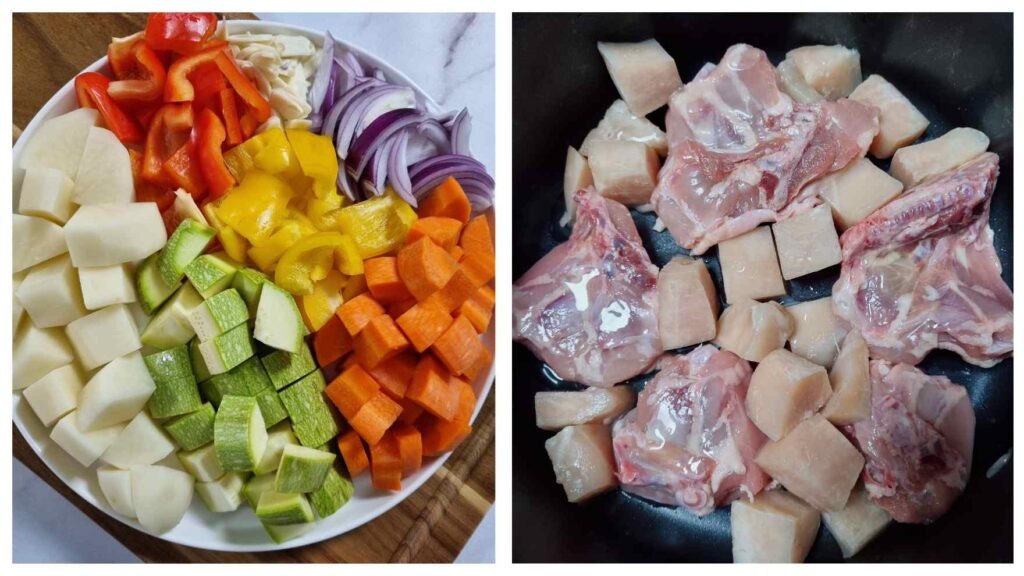
In this recipe, we’re using chicken breast and thighs. You can also use a whole chicken and chop it up into several pieces, or you can buy a tray of thighs and drumsticks at the supermarket. The chicken thighs are bone-in and have skin. Wash the chicken thoroughly, and slice the chicken breasts into one-inch cubes.
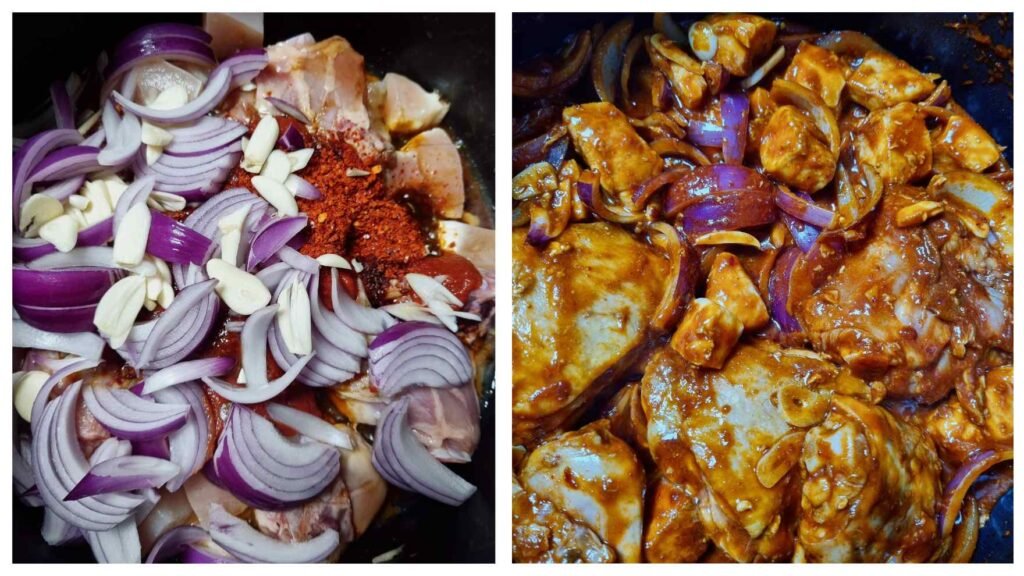
Set the temperature to medium-high. Next, pour the cooking oil into the pot and place the chicken, skin side down, in the pot. Cook the chicken for one minute without stirring. By browning the chicken with the skin facing directly on the surface of the pot, you can achieve extra flavour as the chicken fat infuses into the dish.
Next, adjust the heat to medium-low and add the gochujang, gochugaru, onion, and garlic to the pot. Also, add the tomato paste, ginger and garlic paste, dark soy sauce, oyster sauce, rice vinegar, and black pepper powder. Add the salt at the end of the cooking after tasting the food, as the soy sauce in this dish adds the salty factor.
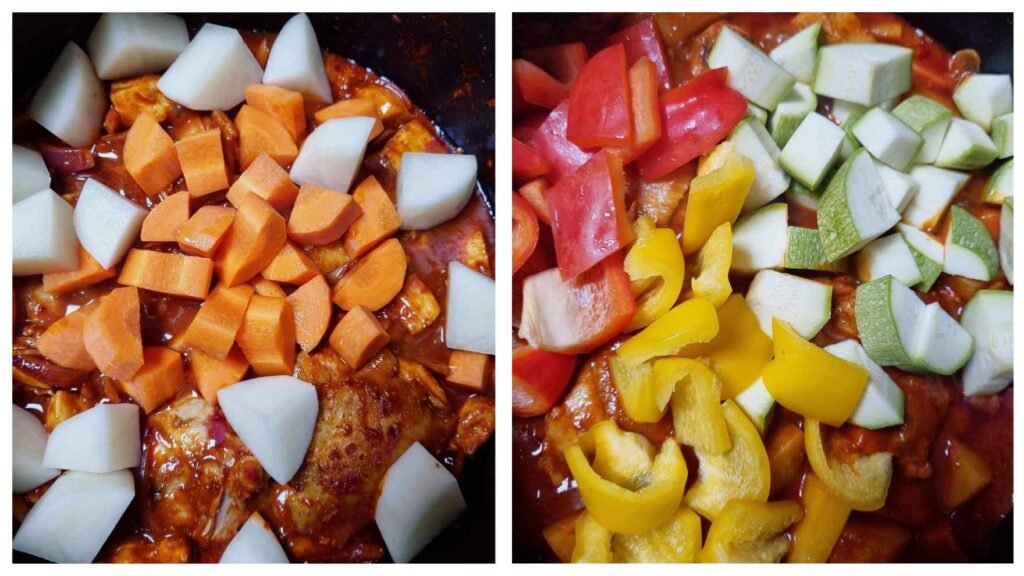
Gently mix everything by stirring from the bottom up. Cook the chicken for three to four minutes, stirring every ten to fifteen seconds from bottom to top. With this method, the umami flavour of the sauce and the fragrance of the aromatics will infuse into the chicken.
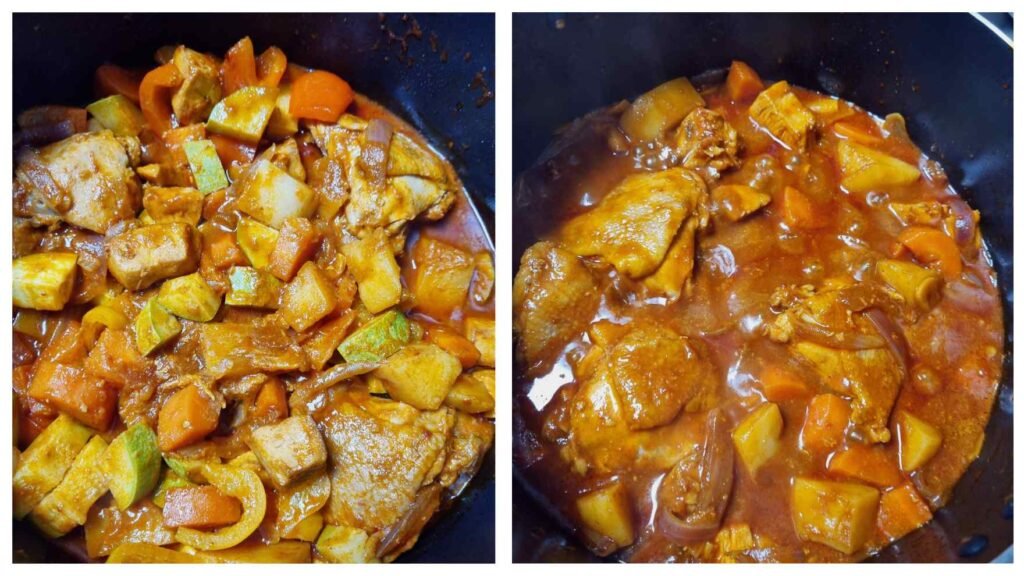
Add one cup of water, potatoes, and carrots to the pot, then simmer for fifteen minutes with the lid closed. Next, add the zucchini and bell pepper to the pot and simmer for an additional ten minutes with the lid closed. Potatoes and carrots take longer to cook than zucchini and bell pepper. For this reason, add the vegetables to the pot at different times. Make sure to stir from the bottom up every five minutes to prevent burning.
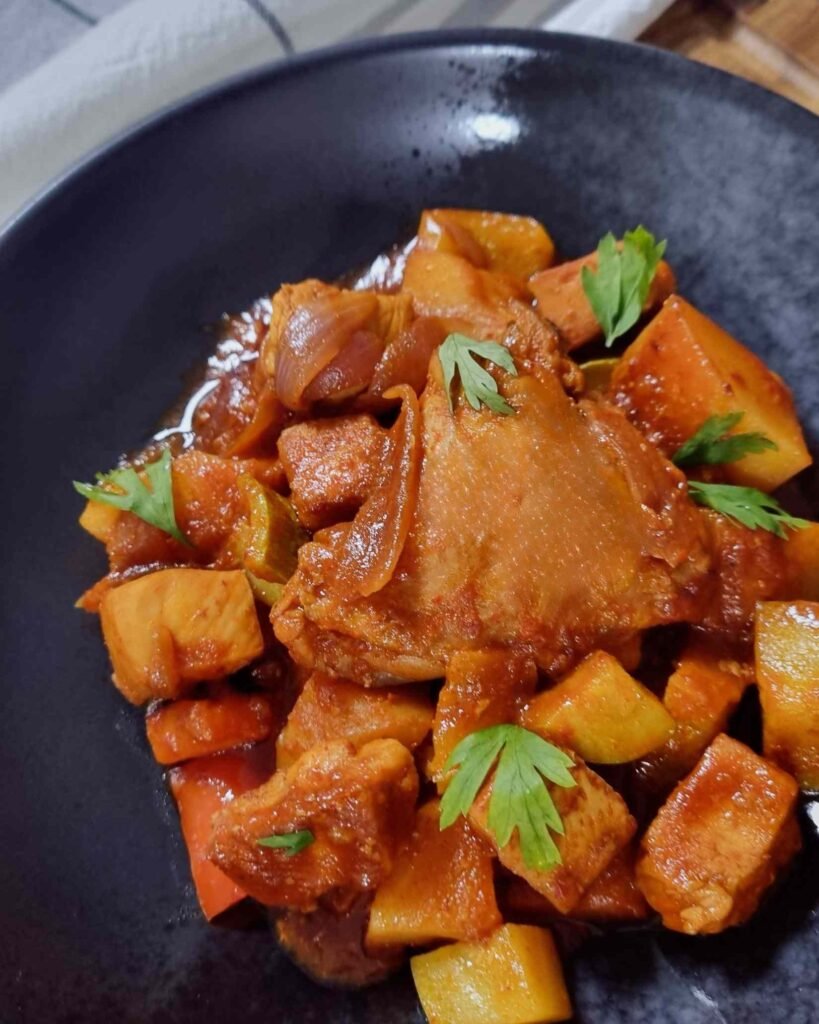
South Korea has a ton of different side-dishes that can accompany this meal. There are so many different varieties of banchans. Everything from Doedeok, to Kkakdugi is available and it all complements Korean food in a unique and beautiful way. Serve with Steamed rice, Kimchi, Jeon (Korean pancakes) and Kim (Seaweed).
Store in the refrigerator for two to four days. Most Koreans prefer freshly made food, you can also freeze this recipe for up to three months. Simply defrost on the counter-top and reheat on the stove-top.
This recipe uses four medium potatoes. Chop one potato into small cubes to help thicken the stew and create a rich gravy. Cut the other three potatoes into larger chunks so that the dish maintains a rustic appearance. The potatoes also absorb a lot of the flavour and are very tasty in this stew.
Did you know that you can cook Dakbokkeumtang in a pressure cooker? Simply wash and prepare all the ingredients according to the recipe, including the water, and add them to a pressure cooker and set the timer for one hour.
